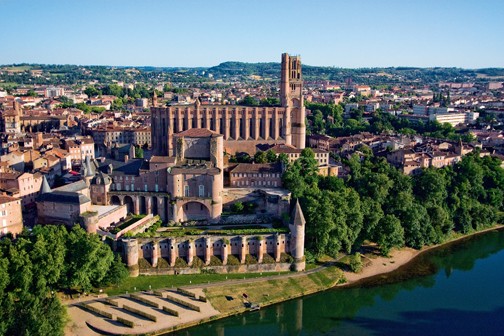Albi and La Réunion Named UNESCO World Heritage Sites

The Cité Episcopale of Albi, in southwest France, and the central mountain zone of Réunion National Park on the island of La Réunion have been named UNESCO World Heritage Sites.
The new cultural site designated as the Cité Episcopale of Albi, encompassing some 50 acres in the city center overlooking the Tarn River, includes the massive 13th/15th-century fortress cathedral of Sainte Cécile, with its superb Renaissace frescoes and flamboyant Gothic rood screen, along with the former Episcopal Palace, the Palais de la Berbie, now the Toulouse-Lautrec museum holding the world’s largest collection of the artist’s work. Also included are the palace’s riverside gardens, the Saint Salvi church and cloister, the Pont Vieux and the banks of the Tarn alongside it.
The natural geographic site on La Réunion, an overseas department of France located in the Indian Ocean east of Madagascar, is described as the “pitons, criques and remparts” (peaks, glacial cirques and natural ramparts) comprising the mountainous central core of Réunion National Park, a nature reserve that covers some 40% of the island.
Announced at the annual UNESCO Congress held in Brasilia in July 2010, the designation of Albi and La Réunion brings to 35 the number of World Heritage sites in France. Among the others are the cathedrals of Reims, Chartres, Amiens and Bourges; the Cité of Carcassonne; the Place Stanislas in Nancy; the Canal du Midi; the center city of Lyon; and the banks of the Seine in Paris including Notre Dame Cathedral, Sainte Chapelle, the Louvre, the Conciergerie, the Grand Palais and the Petit Palais.
Share to: Facebook Twitter LinkedIn Email
Leave a reply
Your email address will not be published. Required fields are marked *



